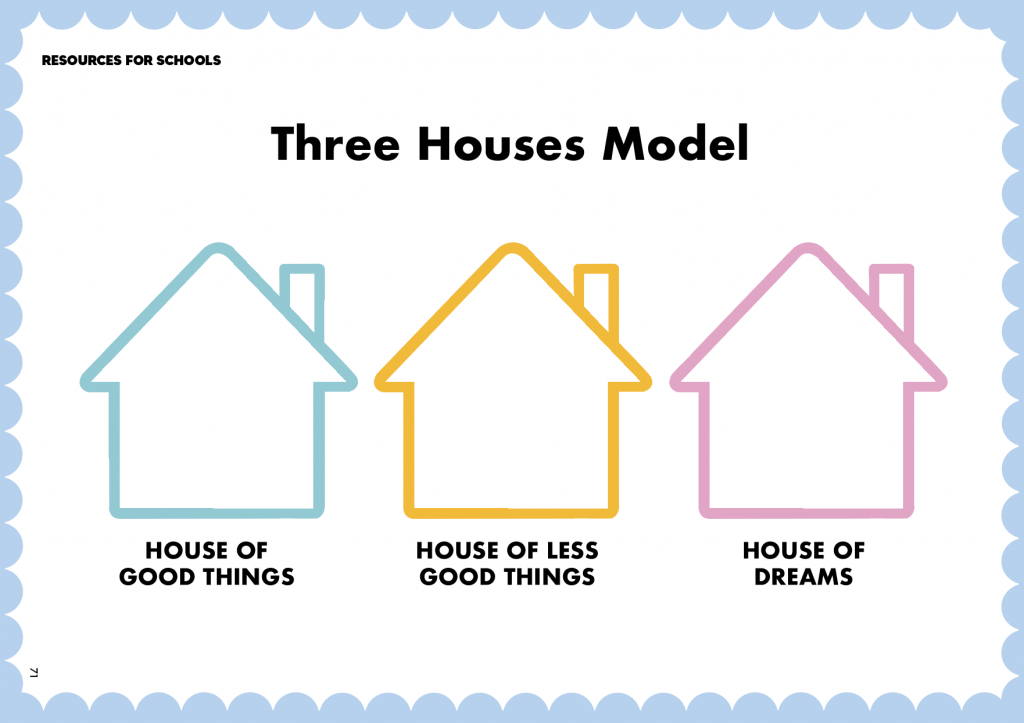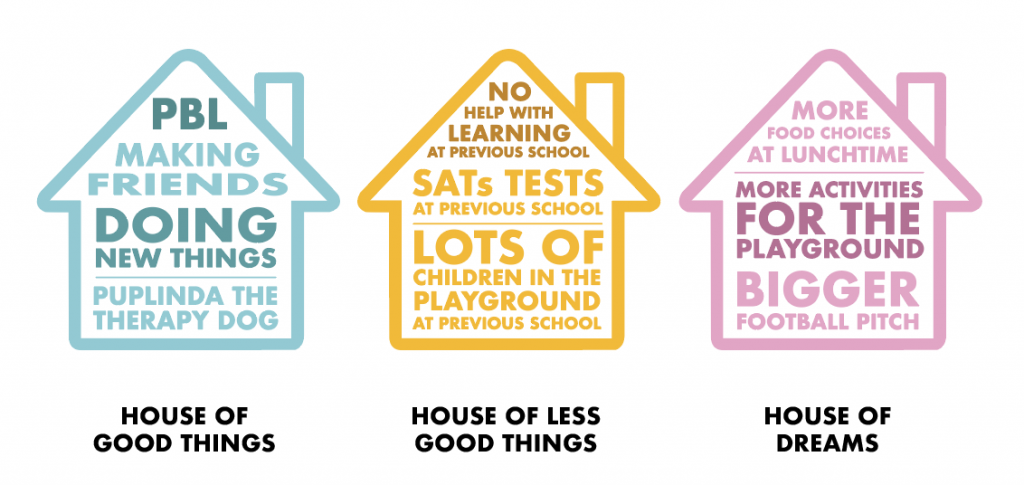Three Houses Model
The Three Houses model is a tool which provides a visual way for people to express their views about a topic or experience. The tool was originally developed in 2003 in New Zealand for use in the field of child protection, but since then has been adapted for use with other groups. The version here is based on that created by Cunningham (2020) who used the tool as a way of eliciting the views of autistic children about what made their school autism-friendly.

How Does It Work?
The Three Houses model is a very flexible tool, which can be adapted to suit the needs or preferences of the young people you work with. Below are two options for how the tool could be used.
Option 1: The adult and young person draw three houses together. Once the houses are drawn the adult explains the name of each house: house of good things; house of less good things; house of dreams. The adult then asks the young person some questions and the young person’s responses are recorded in each house. For example, the adult could ask questions about what
is going well at school. After the young person has given their responses, the adult would add these to the relevant house, in this case, the house of good things. This would be repeated until all three houses are filled.
Option 2: The adult shows a young person a picture of three houses and then asks the young person to draw their own version on a separate piece of paper. The adult would then explain the name of each house: house of good things; house of less good things; and house of dreams. Next, the young person would be asked to write or draw pictures of all the ‘good things’ about something, for example, school. As the young person draws or writes, the adult can ask the young person for more information about what they have drawn or written. This process would be repeated with all three houses.
Example
The below three houses are from Gesher’s conversation with students for the Changing Schools, Changing Lives article.


